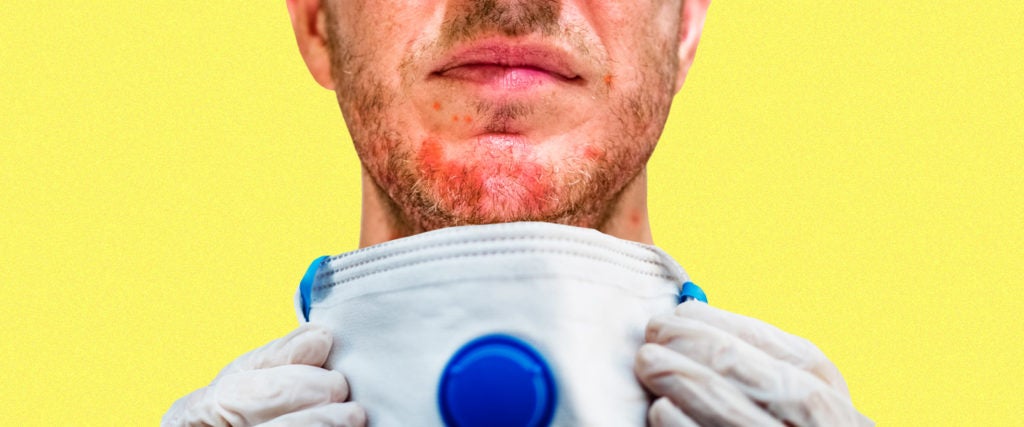The anti-mask crowd is comprised of ghouls sent from hell. They’re putting everyone at risk, spreading disinformation and delegitimizing the few genuine cases of mask allergies or medical conditions that might prevent someone from wearing a mask.
These mask allergies, ranging from skin rashes to throat swelling and respiratory issues, have been a problem among medical professionals who have to wear them for long periods since the SARS outbreak, but while more people are experiencing symptoms today, it’s an avoidable problem for those who don’t require hospital-grade masks.
Mask allergies can manifest in a few ways. Most commonly, the “allergy” people experience isn’t an allergic reaction at all, but acne caused by sweat and bacteria clogging pores. This is more likely among those who re-wear fabric masks which, while potentially more comfortable, require washing after every wear.
Actual rashes on the skin from wearing masks, especially among people who have to wear them for work, are also a common occurrence. Often, this is simply the result of the constant friction the mask causes on the face. In warm areas, masks can also cause heat rashes. Both of these can typically be treated the same way you would a rash on the skin, like with hydrocortisone cream and a moisturizing ointment such as Aquaphor.
In some cases, though, people can experience genuine allergic reactions to the materials of the face mask, especially among disposable or N95 masks. In a 2007 article in the American Contact Dermatitis Society, doctors at the University of Toronto reviewed several cases of reported allergic reactions to N95 masks, primarily among people working in intensive care units. While most reports were of various skin rashes, some cases involved respiratory issues without rashes. In these cases, both the wearers and the masks tested positive for ethylene urea melamine-formaldehyde, quaternium-15 and formaldehyde. These chemicals are commonly found in textile manufacturing, and while they shouldn’t appear in face masks, it’s possible that the masks can become contaminated during manufacturing.
In rare cases, these chemicals can cause a variety of allergic reactions, from rashes to, as noted, breathing problems. Per the 2007 report, only two people experienced reactions directly linked to the presence of formaldehyde and other chemicals, but given the increase in mask production and wear over the last few months, it’s possible that some allergic reactions to masks are similarly caused by such chemicals. Particularly with disposable, non-medical masks purchased from Amazon or other mass retailers that don’t list materials, it’s hard to know the conditions a mask was made in.
Regardless of material, it’s also possible for rashes to lead to respiratory issues as a secondary symptom of the rash. It’s not very common, but in the event you experience unusual trouble breathing combined with a rash, it’s a good idea to contact your doctor.
In most cases, the solution to all this is simply to wear a different kind of mask. According to the Asthma and Allergy Foundation of America, even those with moderate asthma should be able to wear masks — 100 percent cotton masks are usually best for sensitive skin, so long as they’re frequently washed. If your mask is causing you enough problems that you feel you can’t wear it to Target, maybe don’t go to Target — you might be at a higher risk for COVID-19 complications, anyway. In fact, if you have conditions that truly limit your ability to wear a mask, it’s probably safer to avoid indoor public spaces altogether.
So guess what?
Even if you have allergies, you still have no excuse to go to Trader Joe’s without a mask on.

